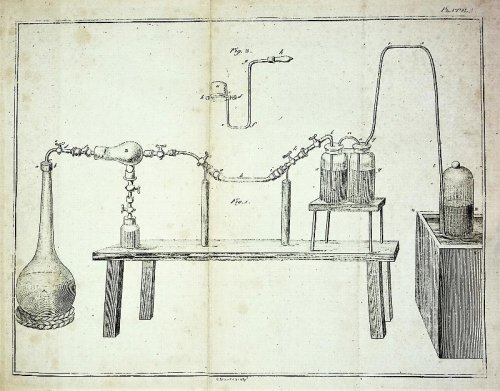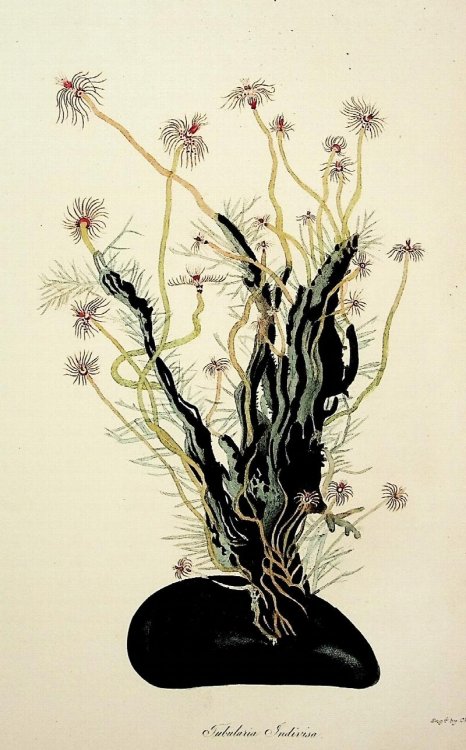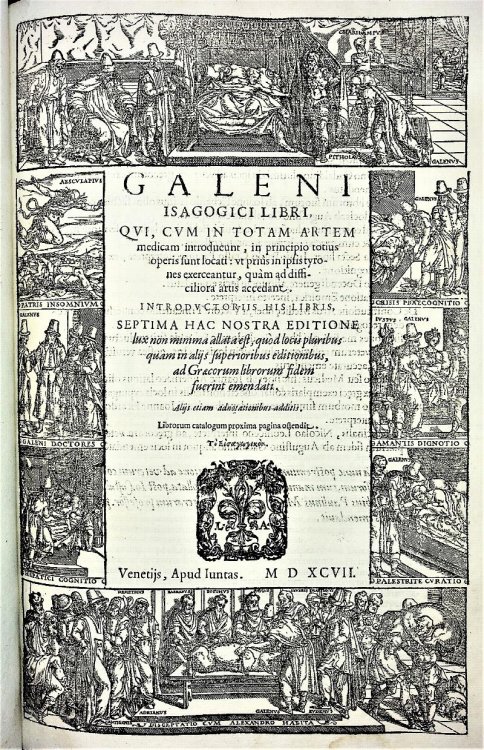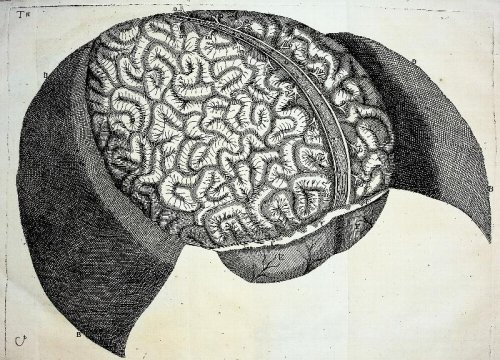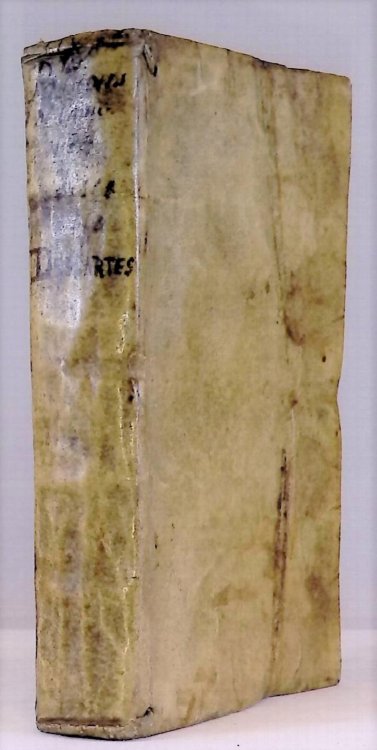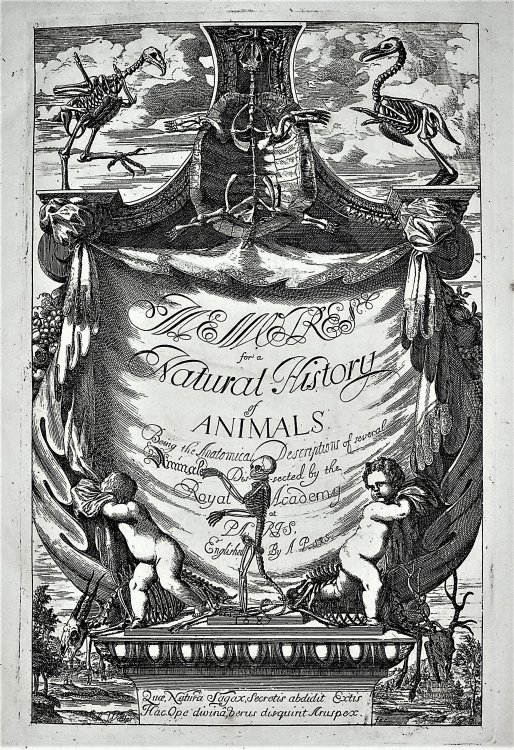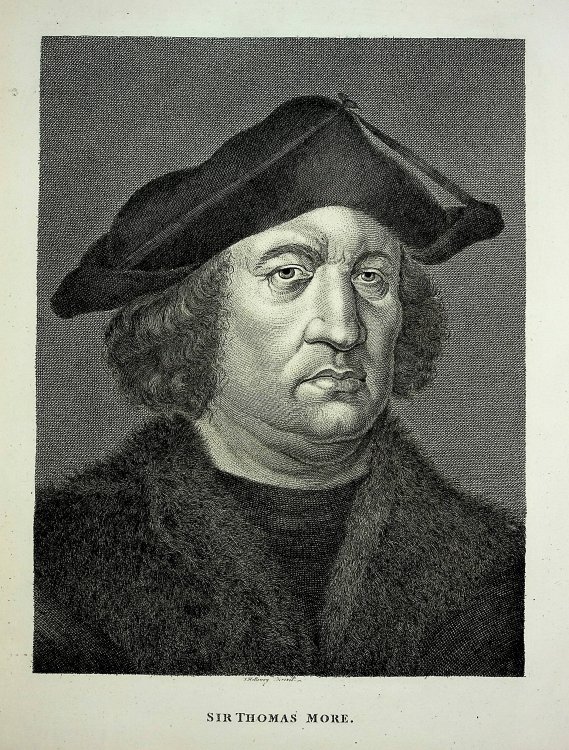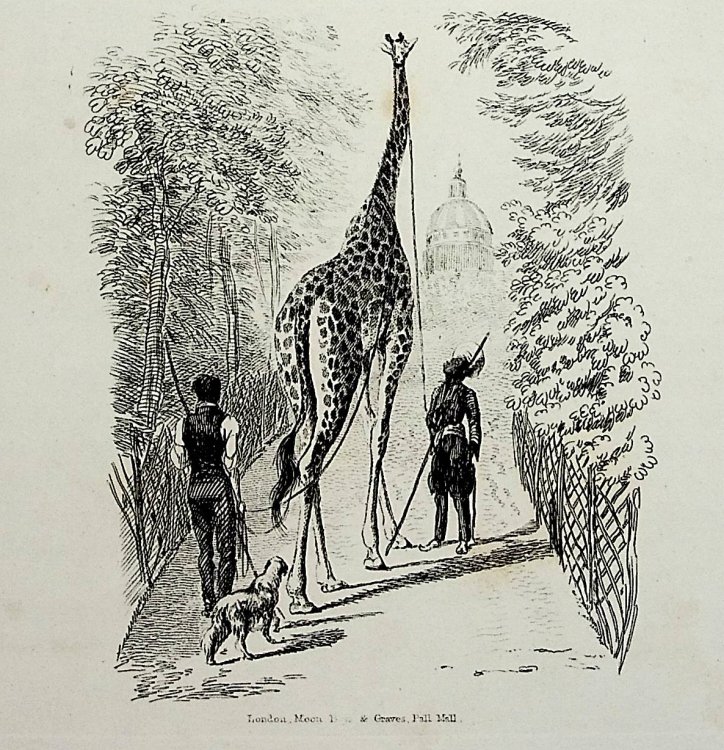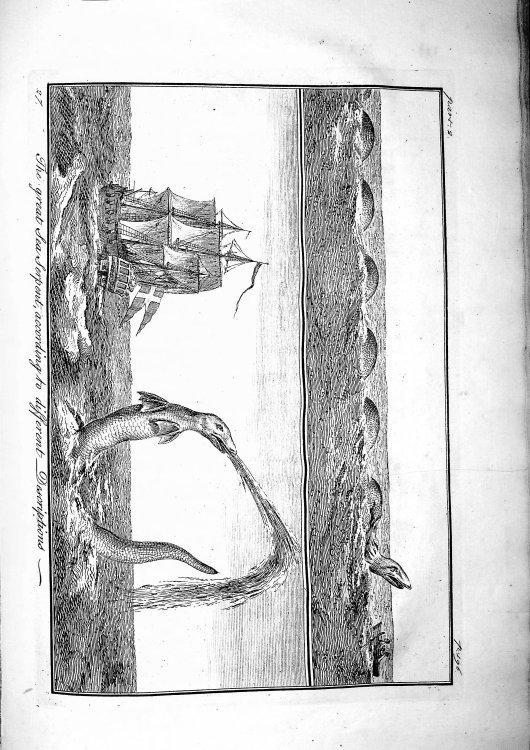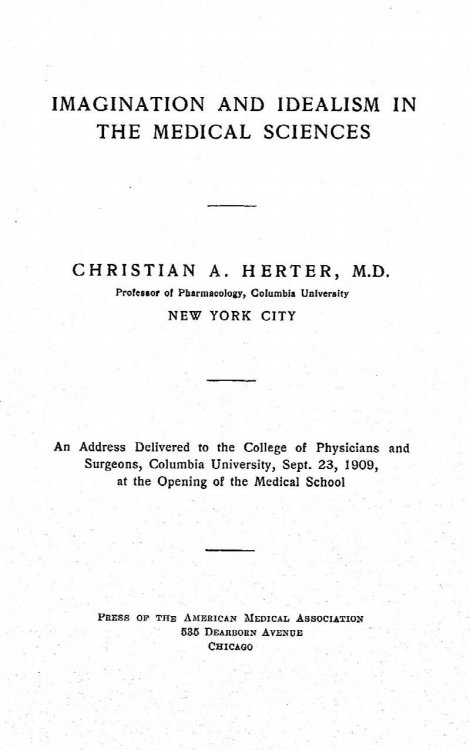
Imagination and idealism in the Medical Sciences
$100.00 USD • Used
1910 LECTURE BY PIONEERING AMERICAN PHYSICIAN SCIENTIST TO COLUMBIA UNIVERSITY MEDICAL STUDENTS INSCRIBED TO NOTED ARTIST WHO WOULD LATER MARRY HIS DAUGHTER.
7 3/4 inches tall hardcover,...
1910 LECTURE BY PIONEERING AMERICAN PHYSICIAN SCIENTIST TO COLUMBIA UNIVERSITY MEDICAL STUDENTS INSCRIBED TO NOTED ARTIST WHO WOULD LATER MARRY HIS DAUGHTER.
7 3/4 inches tall hardcover, blue cloth binding, gilt title to cover, inscribed on front free endpaper to Sergeant Kendall from C. A. Herter, Jan 27, 1910. 40 pp. Light wear to spine ends and cover corners, light foxing to endpapers, very good in custom archival mylar cover. The text is an address delivered to the College of Physicians and Surgeons, Columbia University, September 23, 1909, at the opening of the medical school. The lecture is an inspirational talk to the new medical school class regarding the importance of research in the advancements of medical practice, and reflects his training under William Welch at Johns Hopkins
CHRISTIAN ARCHIBALD HERTER (1865 - 1910) was an American physician and pathologist noted for his work on diseases of the gastrointestinal tract. He was co-founder of the Journal of Biological Chemistry. Christian Archibald Herter was born in Glenville, Connecticut. His father, also Christian Herter, was a notable and wealthy artist and interior designer, head of the Herter Brothers. He was privately educated and began his medical degree at the early age of 15. By the age of 18, he had received an MD from the College of Physicians and Surgeons at Columbia University. He studied pathology under William H. Welch at Johns Hopkins University and traveled to Zurich to study under Auguste-Henri Forel. Herter initially practiced mainly neurological medicine in New York City. His experience was captured in The Diagnosis of Diseases of the Nervous System, a manual he wrote for students and practitioners in 1892. Herter's interest in laboratory medicine led him to relinquish his medical practice and build a laboratory in the fourth floor of his house on 819 Madison Avenue. In 1897, he was appointed professor of Pathological Chemistry at University and Bellevue Hospital Medical College. His lectures were published in 1902. Herter returned to his alma mater in 1903 as Professor of Pharmacology and Therapeutics. It was during this time that he researched diseases of the gastrointestinal tract. His work on celiac disease, which he called intestinal infantilism, led to the eponym Gee-Herter disease. His important contribution was to highlight the retarded growth of affected children. Herter's theory as to the cause - that it was due to overgrowth and persistence of gram-positive bacterial flora normally belonging to the nursling period - failed to gain acceptance. However, he did correctly identify that any attempt to encourage growth by the use of increased amounts of carbohydrates led to relapse. This would later be discovered to be due to the gluten content of wheat.
PROVENANCE: WILLIAM SERGEANT KENDALL (1869 - 1938), was an American painter, most famous for his paintings of children, his subjects often being his three young daughters with his wife. His life seems inconsistent with his art as his family life was full of turmoil, due to his romantic connection with his under-aged pupil, Christine Herter (daughter of the author), whom he married following the dissolution of his first marriage in 1921. Kendall's works hang in the Metropolitan Museum of Art, and the Museum of Fine Arts, Boston. He also was the Dean of the School of Fine Arts at Yale from 1913 to 1922.
Product Info
Publisher: American Medical Association
Year: 1910
Type: Used
Binding: Softcover
First Edition
Seller Info
BiomedRareBooksLLCABAAILABIOBA
Address: P.O. Box 193 North Garden, Virginia
Website: https://www.biomedrarebooks.com
Country: United States
